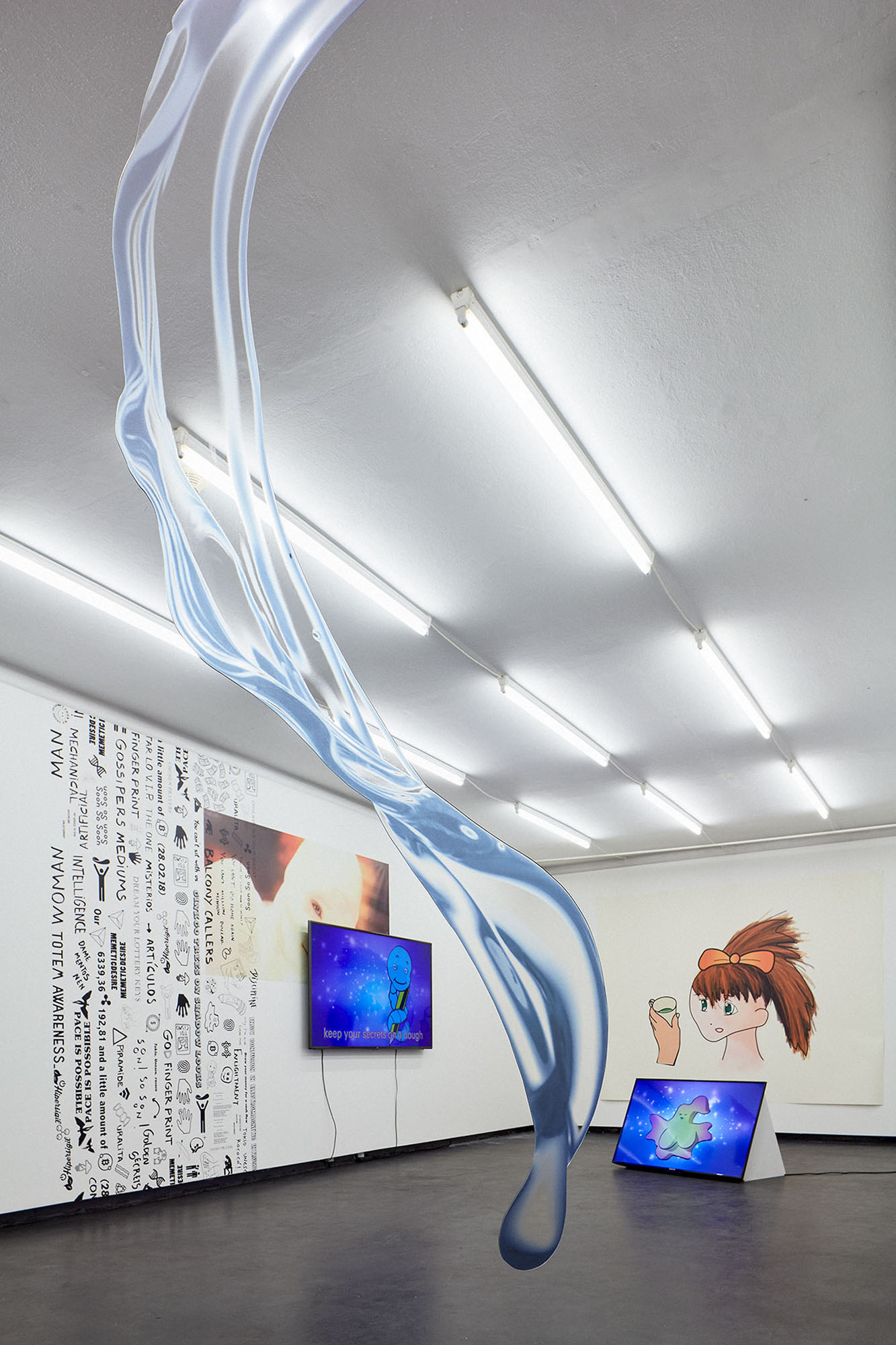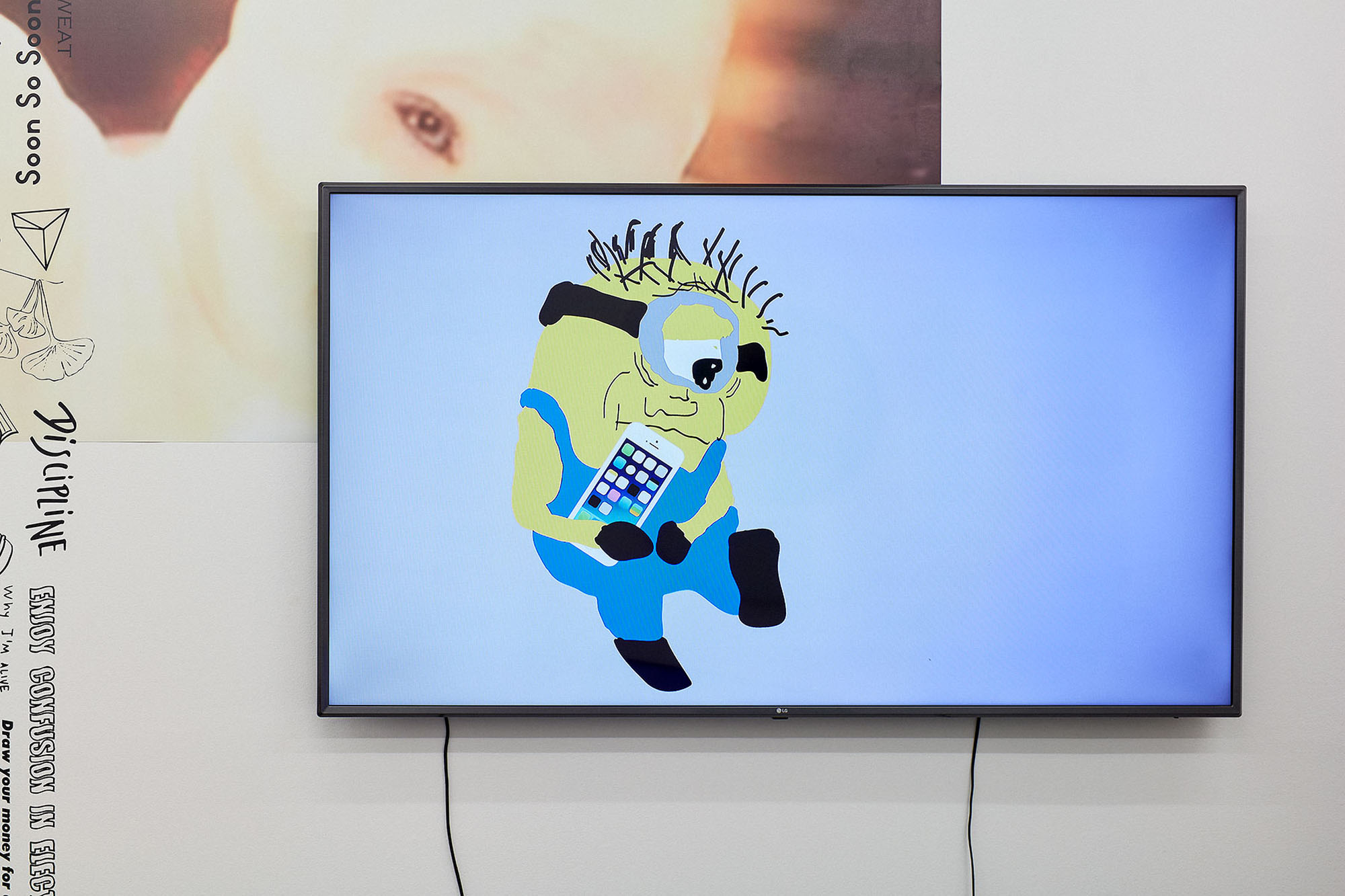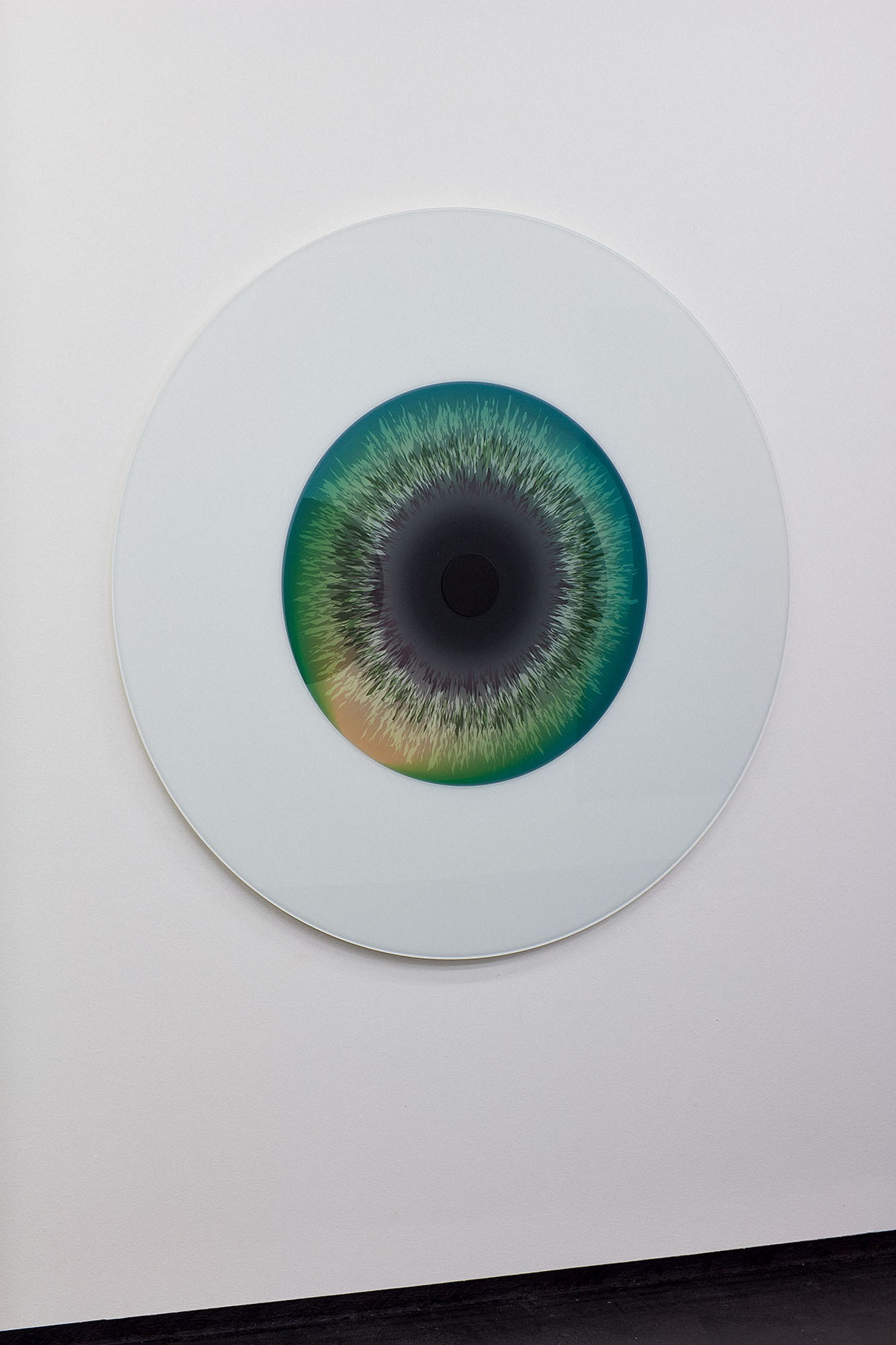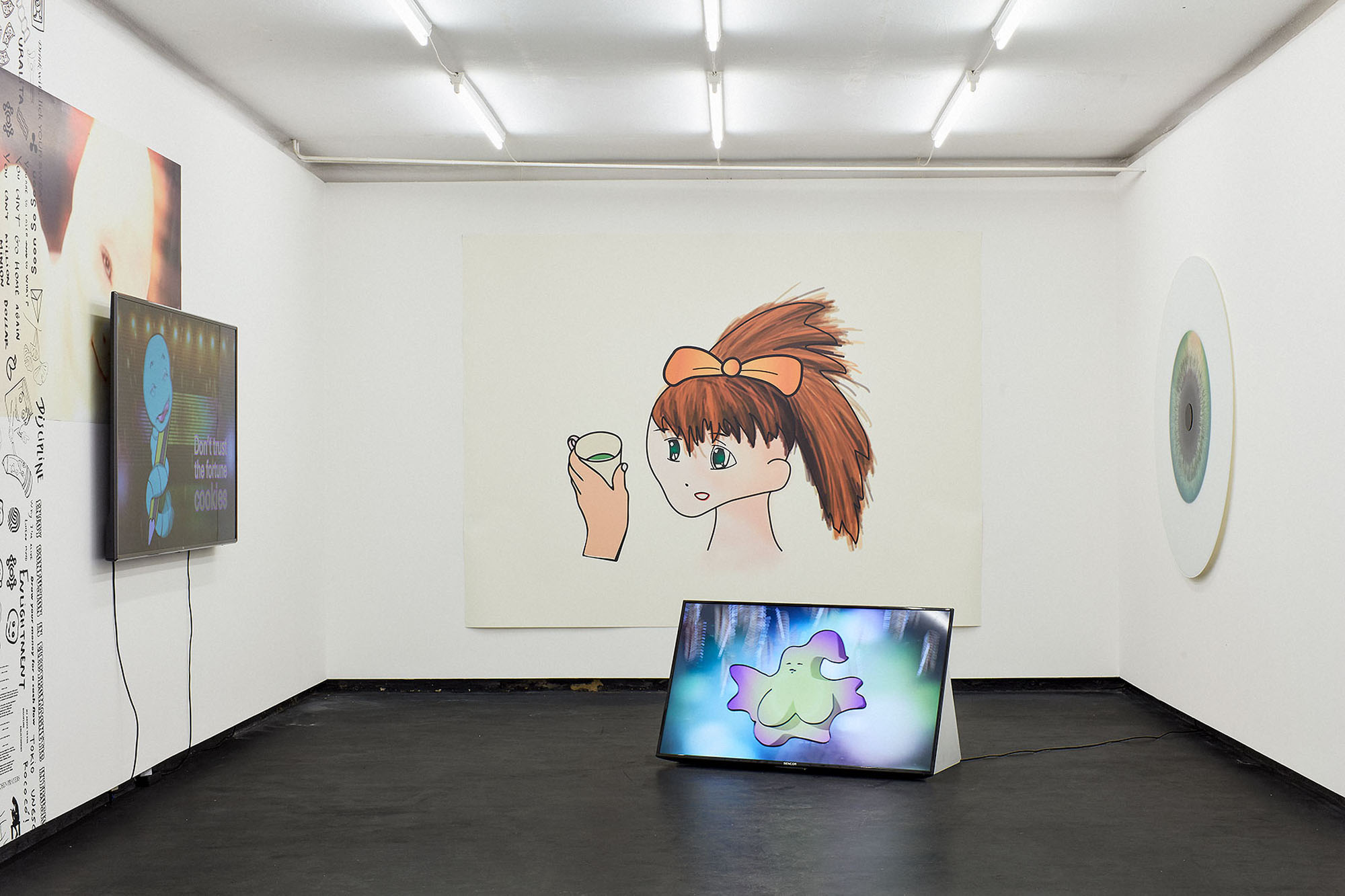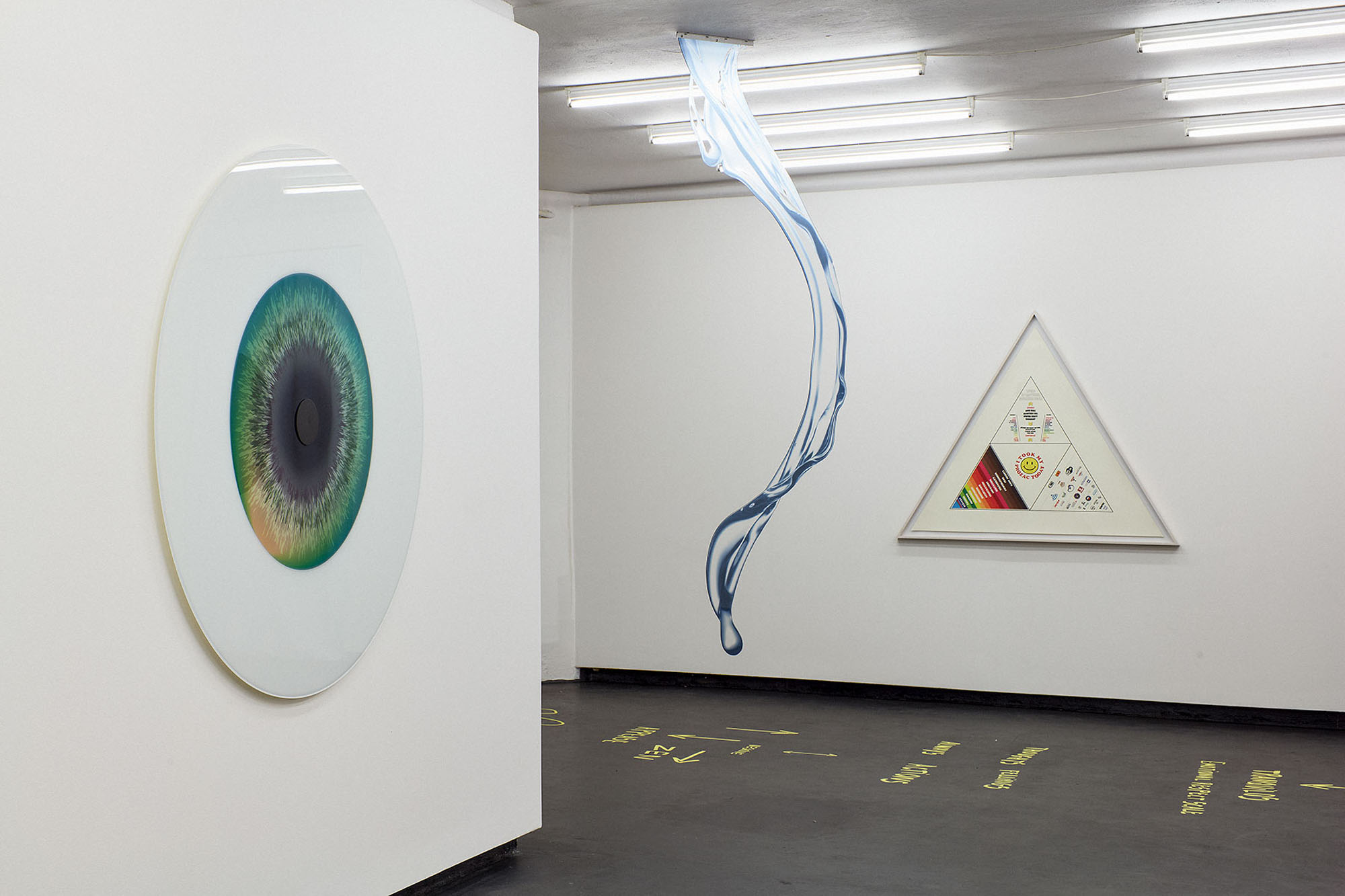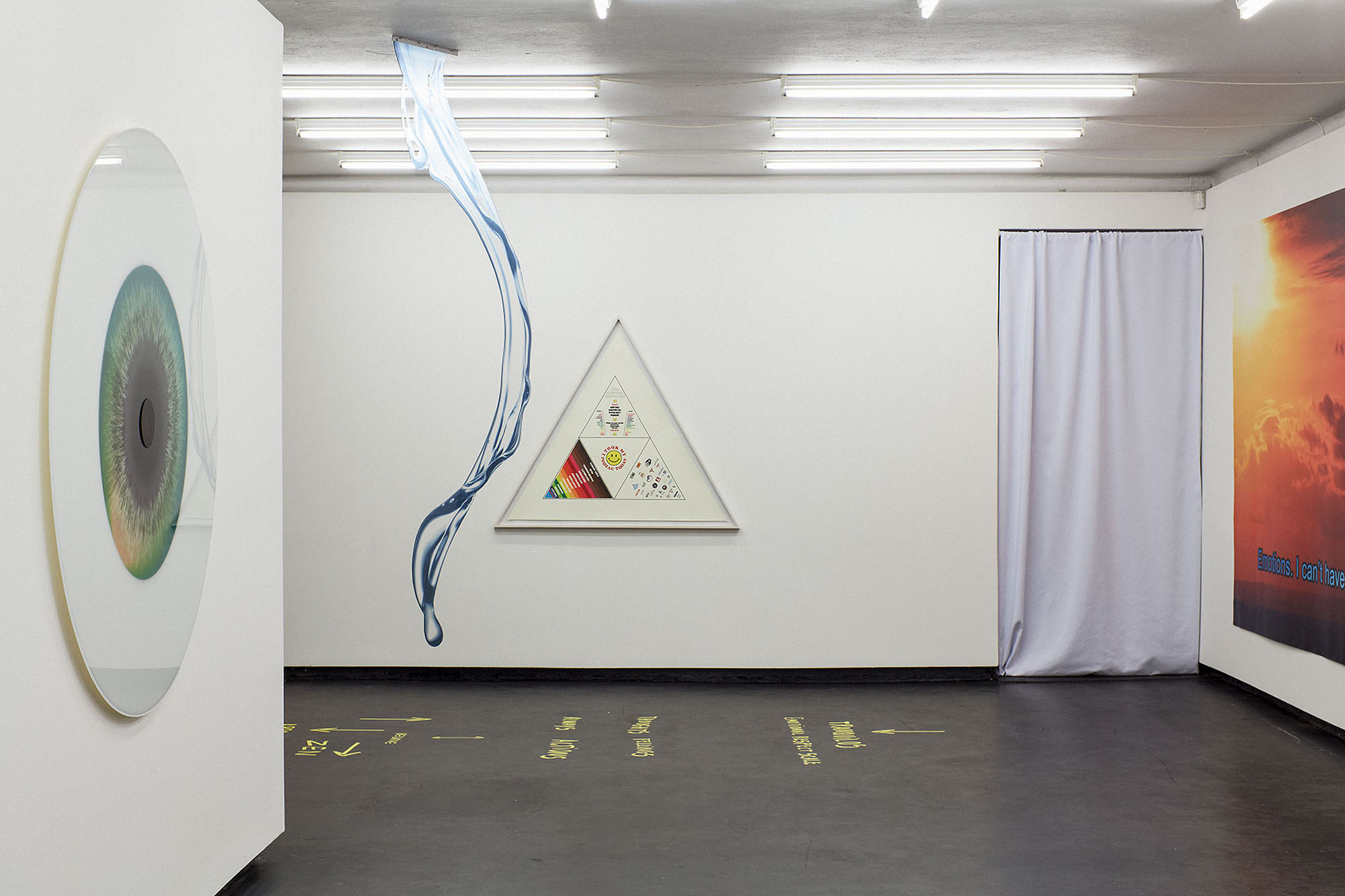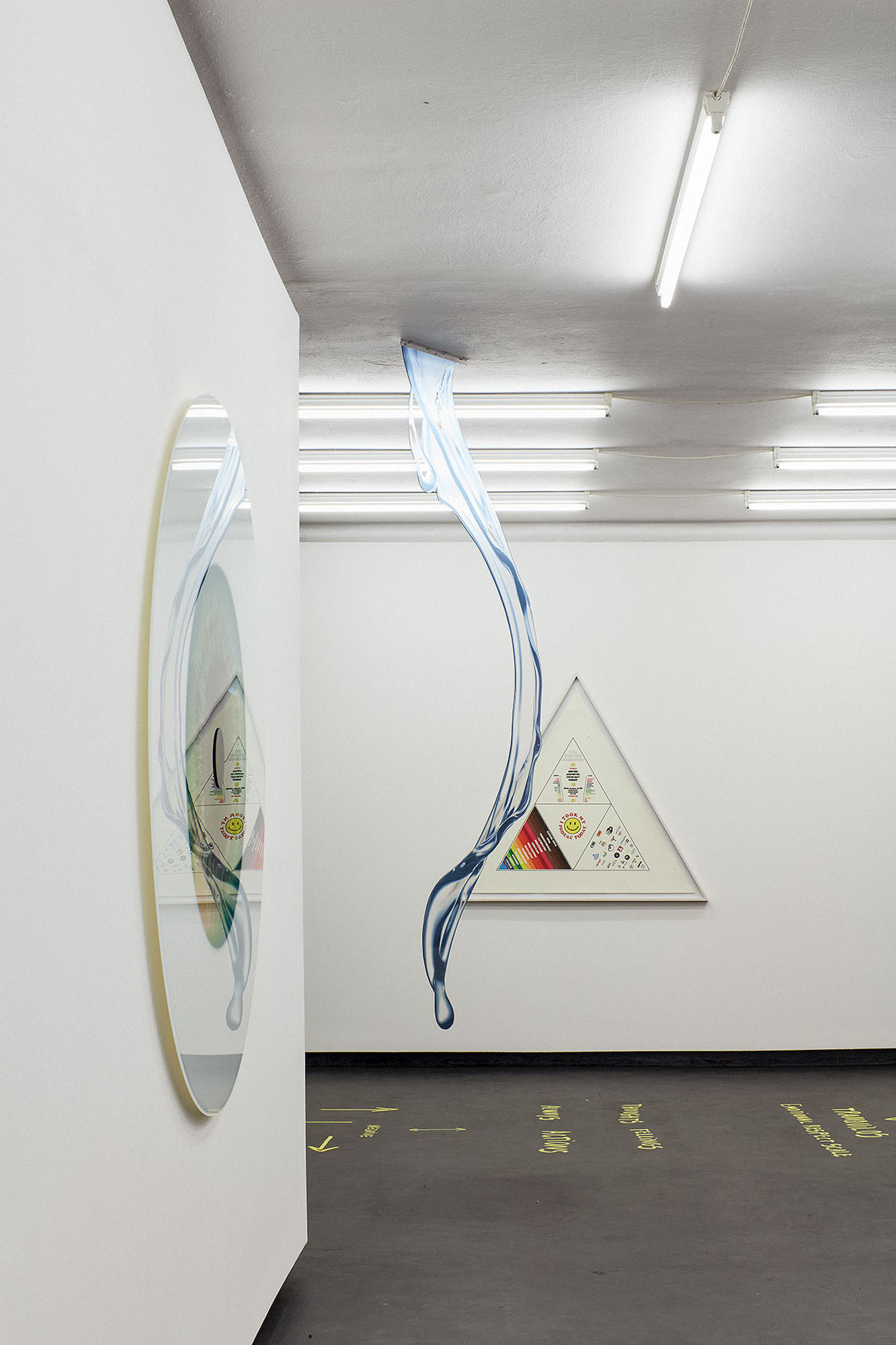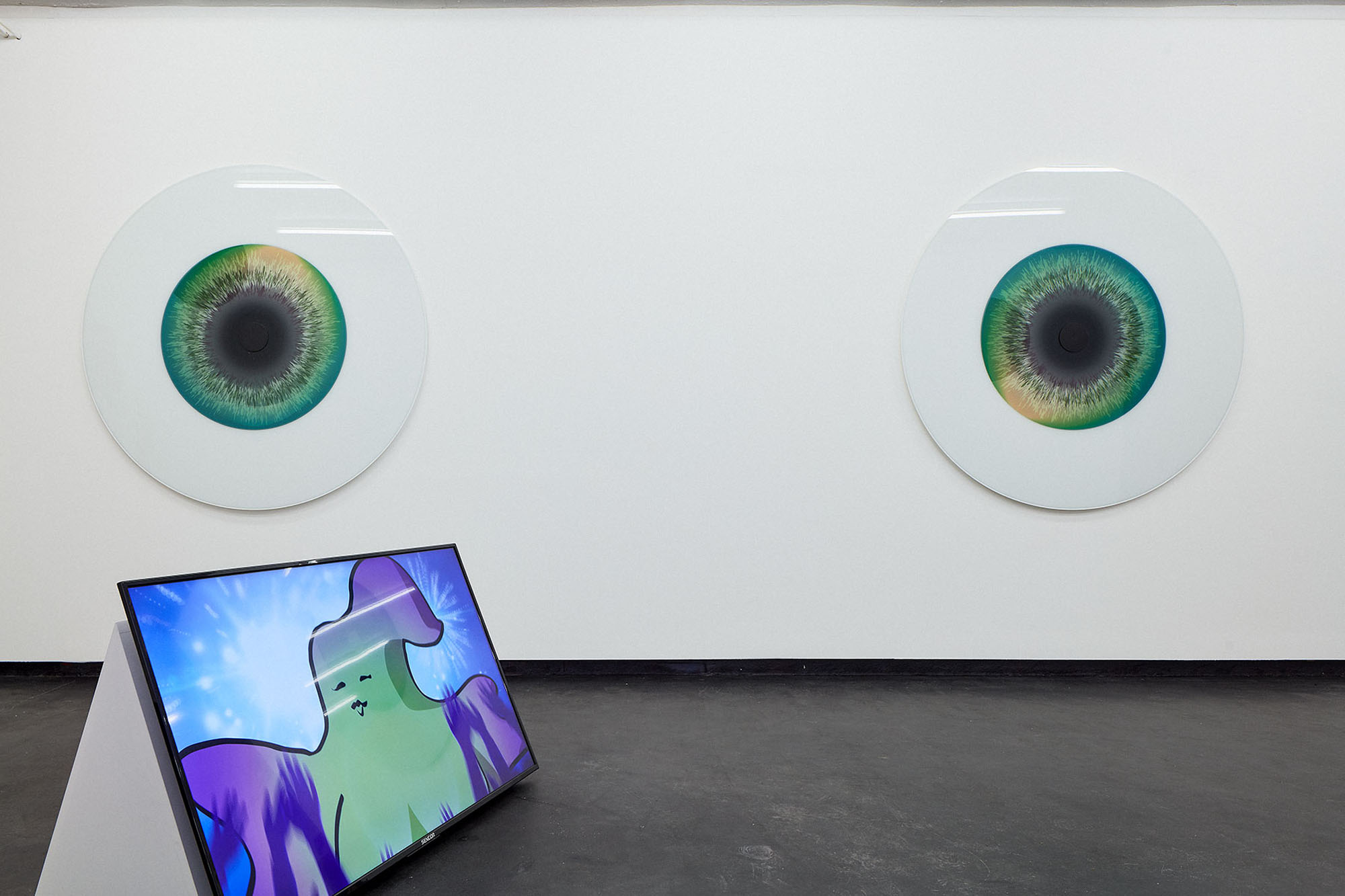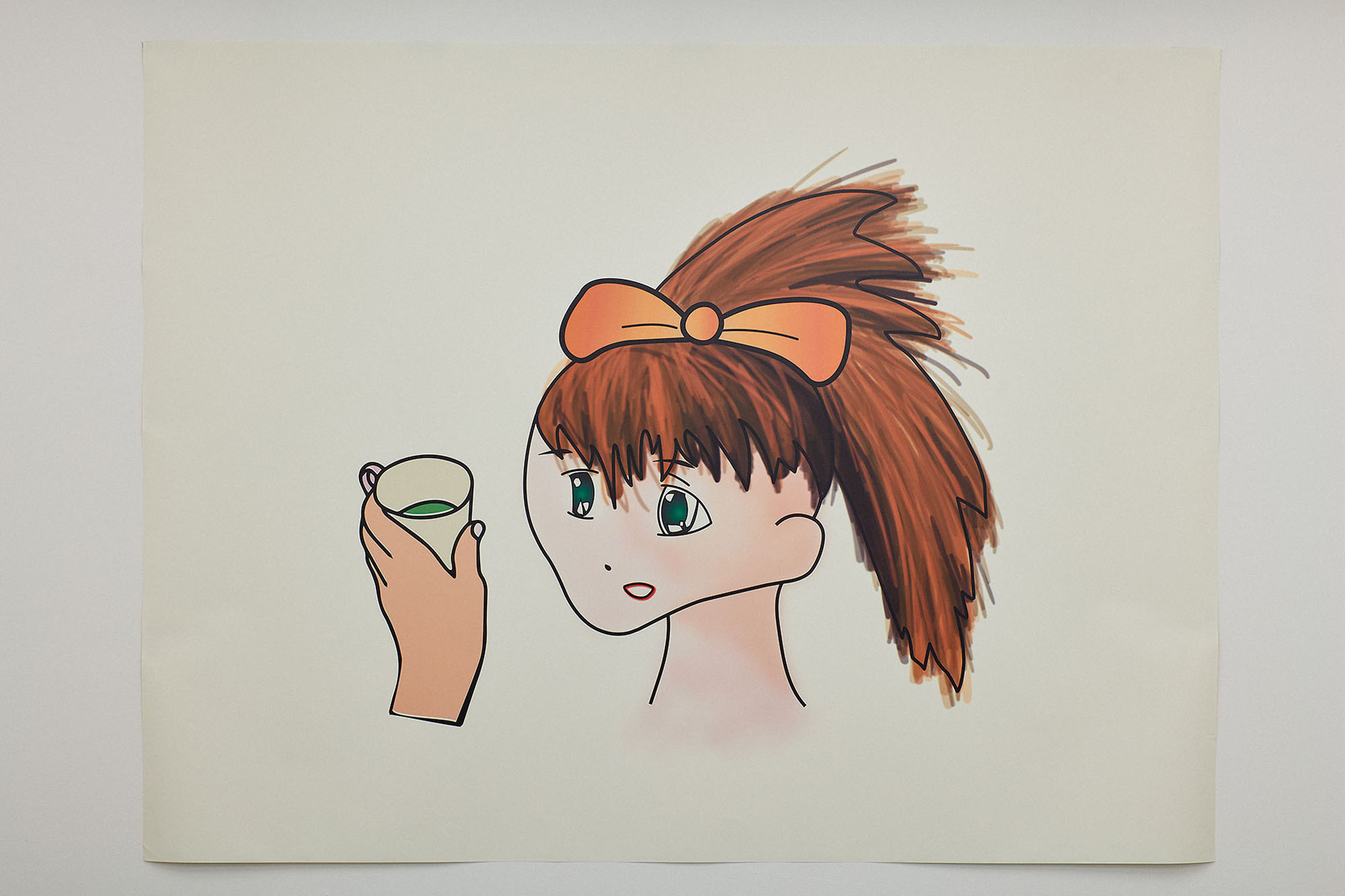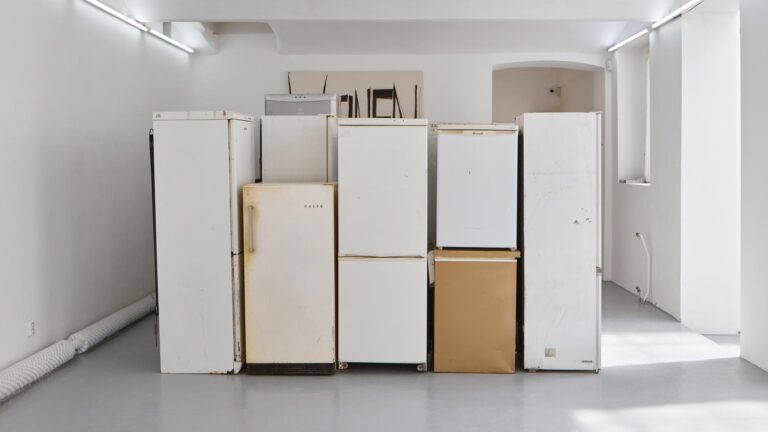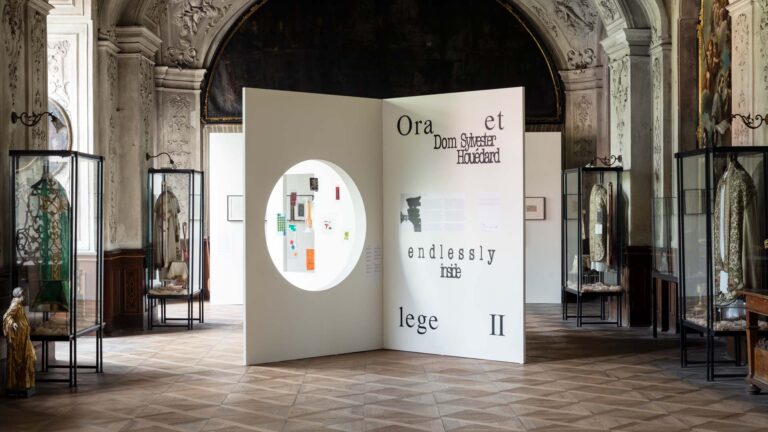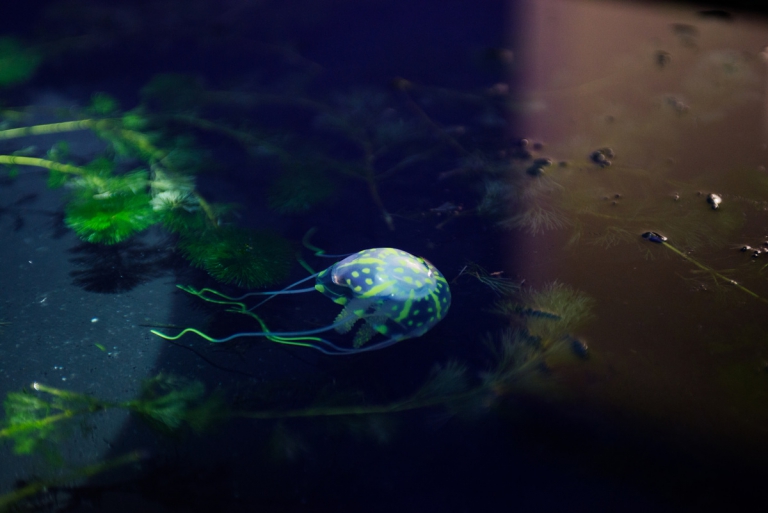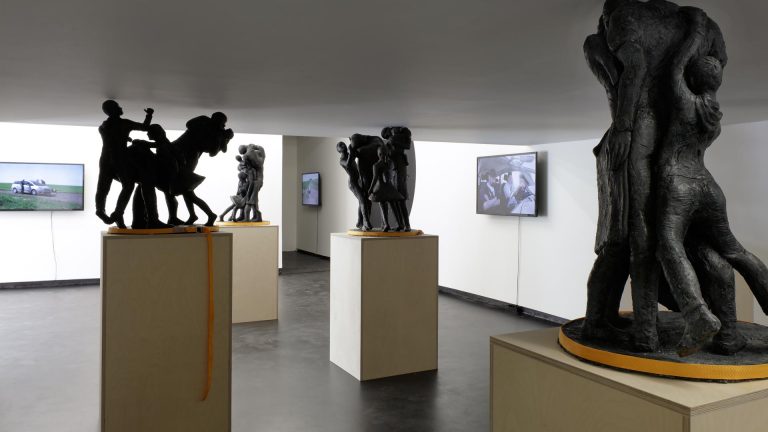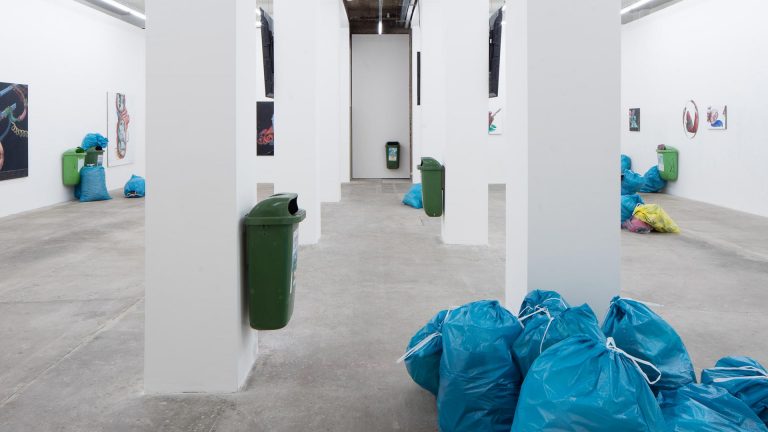Artists: Momu & No Es (Eva Noguera and Lucía Moreno)
Exhibition title: Who Does She Think She Is
Curated by: Kiki Petratou, Galerie JOEY RAMONE
Venue: Nevan Contempo, Prague, The Czech Republic
Date: August 31 – October 5, 2019
Photography: all images copyright and courtesy of the artists and Nevan Contempo, Prague
Post-Internet denotes an idea in arts and criticism that refers to society and modes of interaction following the widespread adoption of the Internet. Generally it is described as art that is about the Internet’s effects on aesthetics, culture and society.
Following this principle the work of artist duo Momu & No Es (Eva Noguera and Lucía Moreno) – which takes various shapes including installations, sculptures, video art and video performance – merges a criticism to the hyperconnectivity in a time of cogni-tive-cultural economy with the absurd. Through distinct forms of setting-up subjectivi-ties the work expresses the suspicion and genuine distrust towards the evolution of the use of the ‘new reality’ technologies. Social media for example include numerous tech-nologies and their influence on the behavior of a vast part of the human population can hardly be underestimated. Social media platforms have become a common feature of every day life as they allow instantaneous communication, status updates, and so-cial networking among individuals. They are now often a primary vehicle for people to present themselves to others, expand the role other individuals can play in one’s own self-presentation, and expand the audience.
Momu & No Es’ latest exhibition entitled Who Does She Think She Is on the one hand denotes the Internet’ s effects on aesthetics, culture and society while on the other hand points to an offline reality where Momu & No Es negotiate their offline relation-ship. Earlier titles such as My Advice to Eva, My Advice to Lucy or Be Careful my Sister remind us that despite being with one foot into the digital world we still have a tangi-ble body and a mind. Who Does She Think She Is questions appearances, attitudes, interactions, behaviors, self-presentation, experience, personality, audiences, affor-dances. The work describes daily situations that lead everyone to frustration: a video expressing gratitude to eliminate an applicant in a recruitment process, a lady who needs to call her dog in her five minutes’ break, a pyramid of Maslow and a worm that sings to you that you are a loser. There are repressive and paternalistic elements, a ghost who does not care about anything and that lives in this same world. There are texts, symbols and images juxtaposed and in a constant dialogue; a cocoon as a be-ing of light, stoicism as a way of living, advertising memes, predictions about a future guided by artificial intelligence.
The installation referencing millennial friendship highlights how young people of the artists’ generation conceive personal relationships, intimacy and their external projec-tion in a time when nothing but success seems to be acceptable and such success is not understood without staging, without replication.
Borrowing Manga aesthetics and those generated by social networks, Momu & No Es, propose a response to the frustrations generated and amplified in the sea of data in which we live, a response based on empathy and care. As Momu & No Es put it, their recent work “continues this idea of fraternity in a world of fragmented time and nar-rations, and defends that as long as a you and a me exist there will be hope because there is an us”.

